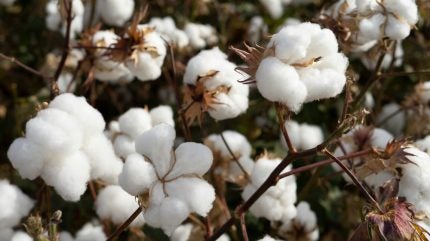
The bombshell CertainT isotope testing report that found almost a fifth (19%) of US cotton samples had Xinjiang origin as recently as March this year despite the Uyghur Forced Labor Prevention Act is, to put it mildly, highly concerning.
The fact that over half of those blends audaciously claimed US origin provides a very literal meaning to the phrase ‘pulling the wool over our eyes’ or should we say ‘cotton’ in this instance.
Gherzi Textil Organization partner Robert P. Antoshak explained that controlling the use of Xinjiang-origin cotton in global supply chains is an extremely difficult task.
“As the yarn-spinning industry is so accustomed to blending cotton from various geographic regions, it is always going to be difficult for authorities to police the origin of cotton — and the offending companies know it,” he said.
Antoshak rightly noted “there is little question” that new technologies must be embraced to curb these unethical practices.
In contrast, China officials seem to be remarkably unfazed by the global criticism of cotton made from Xinjiang, touting surging output and ambitious expansion plans, particularly into Belt and Road nations.

US Tariffs are shifting - will you react or anticipate?
Don’t let policy changes catch you off guard. Stay proactive with real-time data and expert analysis.
By GlobalDataAccording to the Global Times, Liang Yong the director of the Xinjiang cotton industry development leadership office said the country will be working on a homegrown cotton quality tracing system and certification system.
He also revealed the nation plans to build “homegrown brands” from its alleged tainted supply of cotton in Xinjiang region, so it will be interesting to see how these products will be marketed overseas.
The same article claimed that in 2023 the overall mechanisation rate for cotton harvesting hit 89% in Xinjiang compared with 21% in 2014.
The implementation of the Uyghur Forced Labour Prevention Act has caused a decrease in China’s exports of textiles and clothing to the US, but it would appear this isn’t enough to stop the rise of Xinjiang cotton worldwide or from it accessing the US supply chain.
The issues surrounding forced labour in Xinjiang hits headlines semi-regularly, however it is not an isolated case.
The Cotton Campaign’s recent report claiming forced labour was found in Turkmenistan‘s 2023 harvest serves as a sobering reminder that it does occur elsewhere.
While marginal progress has been made in the region as the authorities did not mobilise teachers and doctors for the harvest, the continued subjugation of other state employees has led the Cotton Campaign to call on fashion brands to stop using the country’s cotton in their supply chains.
To the credit of the NGOs involved, they are not merely reciting problems, but proposing robust solutions – from stricter supply chain monitoring to brands outright banning unethical cotton sources.
Heed their calls, industry leaders, lest your commitment to sustainability rings as hollow as the symbolic white of tainted cotton.
Top news stories on Just Style last week …
Xinjiang cotton ‘widespread‘ despite US UFLPA legislation
CertainT Isotope testing has found 19% of cotton samples showed evidence of a Xinjiang origin between February 2023 and March 2024 despite the enforcement of the Uyghur Forced Labor Prevention Act (UFLPA).
Chinese officials double down on producing, exporting Xinjiang cotton
Cotton output surged in Xinjiang in 2023 despite a perceived lull in exports, with Chinese officials attributing this to tech innovation and the promotion of large-scale cultivation.
Turkmenistan urged to end forced labour in cotton supply chain
Global fashion brands and retailers are being asked to prohibit the use of Turkmenistan cotton after a new report has alleged state employees were subjected to forced labour during the 2023 harvest.
Explainer: From Kanye to Rishi Sunak, the cost to Adidas‘ brand image
Adidas was embroiled in an unlikely backlash earlier this year when UK Prime Minister Rishi Sunak and his Labour rival Keir Starmer donned pairs of its famous sneakers, highlighting the potential pitfalls brands face when their products become associated with controversial partners or personalities.
Explainer: Lululemon probe thrusts ‘misleading‘ green claims into spotlight
Lululemon is the latest brand caught up in allegations of “misleading” consumers with its sustainability claims as industry experts say companies must ensure any green claims made are “reasonable and balanced” to prevent reputational damage.
US economy shows resilience in Q1 despite lingering inflation
The National Retail Federation has revealed the US economy’s pace of growth declined in the first quarter (Q1) with an unexpected bout of inflation, however a solid job market kept consumers spending.
In Data: Primark’s low prices help make it UK’s biggest apparel brand
Associated British Foods’ budget retailer Primark was the biggest apparel brand in the UK in 2023, according to GlobalData’s latest report, with industry experts crediting its trend-led fashion offerings and affordable prices.



